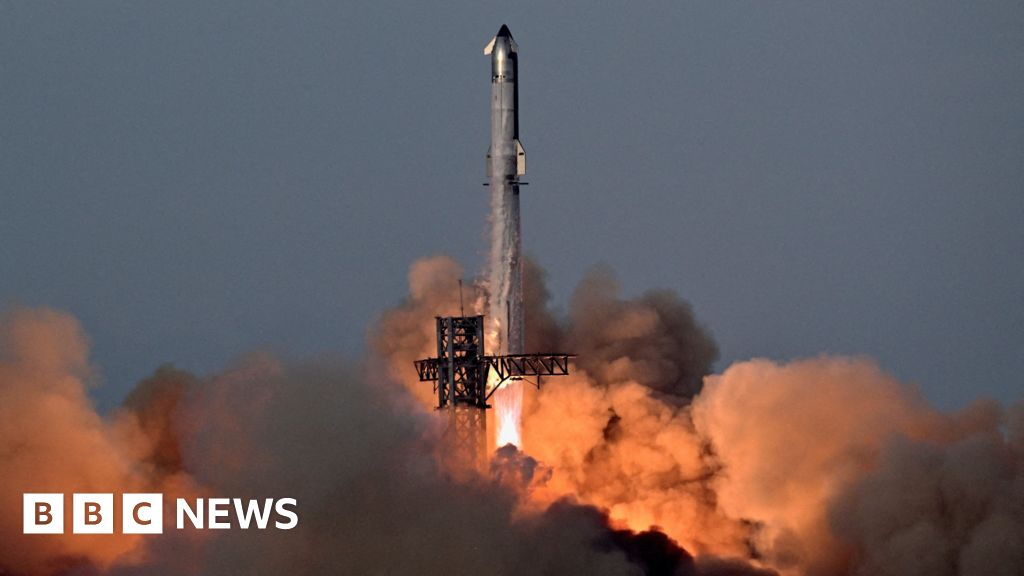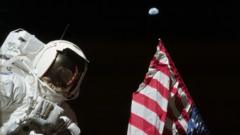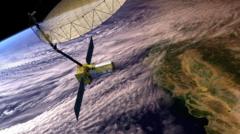Commander Reid Wiseman, heading NASA's upcoming lunar mission, expressed excitement about exploring untouched regions of the Moon, declaring that the crew will witness sights 'no human has ever seen.' Speaking at a press conference, Wiseman highlighted that their spacecraft would likely traverse vast uncharted territories of the Moon, contributing to an unrivaled understanding of its landscape.
NASA has ambitious plans for the Artemis II mission, which could see the first crewed lunar flight in half a century as early as February 2026. Mission specialist Christina Koch emphasized the potential for gathering detailed data, stating that astronauts would have a three-hour window to study the lunar surface in detail. 'Human eyes are among the best scientific instruments we possess,' she noted.
Amidst their explorations, the astronauts are also preparing to address profound questions, such as the existence of life beyond Earth, illustrated by Koch's comment on connecting the Artemis II mission to future Mars explorations.
The Artemis II mission is poised to be the second launch of the overall Artemis program, focusing on establishing a sustained human presence on the Moon. Wiseman revealed that the crew selected the name 'Integrity' for their spacecraft, symbolizing peace and hope for all humanity.
This mission will see four astronauts inspired by the famous Apollo Moon missions of the 1960s, pushing human capability and government collaboration further than ever before.
Christina Koch, poised to become the first woman on the Moon, was inspired to become an astronaut after seeing the iconic Earthrise photograph taken by Bill Anders during Apollo 8, fueling her drive to pave a new path for the next generation. Stateside, Jeremy Hansen will become the first non-American to walk the lunar landscape, and Victor Glover, set to make history as the first black person on the Moon, brings a well-rounded expertise in aerospace to the mission.
Their collaboration emphasizes not only technological advancements but also a unifying message of global cooperation in space exploration. As Reid Wiseman concluded, this mission is intended for all of humanity, pushing boundaries in the same spirit that showcased during the Apollo era.
NASA has ambitious plans for the Artemis II mission, which could see the first crewed lunar flight in half a century as early as February 2026. Mission specialist Christina Koch emphasized the potential for gathering detailed data, stating that astronauts would have a three-hour window to study the lunar surface in detail. 'Human eyes are among the best scientific instruments we possess,' she noted.
Amidst their explorations, the astronauts are also preparing to address profound questions, such as the existence of life beyond Earth, illustrated by Koch's comment on connecting the Artemis II mission to future Mars explorations.
The Artemis II mission is poised to be the second launch of the overall Artemis program, focusing on establishing a sustained human presence on the Moon. Wiseman revealed that the crew selected the name 'Integrity' for their spacecraft, symbolizing peace and hope for all humanity.
This mission will see four astronauts inspired by the famous Apollo Moon missions of the 1960s, pushing human capability and government collaboration further than ever before.
Christina Koch, poised to become the first woman on the Moon, was inspired to become an astronaut after seeing the iconic Earthrise photograph taken by Bill Anders during Apollo 8, fueling her drive to pave a new path for the next generation. Stateside, Jeremy Hansen will become the first non-American to walk the lunar landscape, and Victor Glover, set to make history as the first black person on the Moon, brings a well-rounded expertise in aerospace to the mission.
Their collaboration emphasizes not only technological advancements but also a unifying message of global cooperation in space exploration. As Reid Wiseman concluded, this mission is intended for all of humanity, pushing boundaries in the same spirit that showcased during the Apollo era.

















